Introduction to the Power of Modern Technology
Technology in today’s rapidly changing environment is fundamental to advancement, and it encompasses much more than just electronic devices. Technology permeates every aspect of our lives, from communication and transportation to healthcare, construction, and production. Knowing that technology is not a singular entity is crucial for fully appreciating its revolutionary potential. Different types of technology have different innovations, uses, and effects. This article delves into the seven categories of technology, providing a glimpse into how they influence our contemporary environment and propel society forward at a dizzying rate.
What Are the 7 Types of Technology and Who Needs to Know Them?
Anyone interested in technology’s impact on society and the economy, whether they are students, professionals, corporate executives, or just plain old tech nerds, will find something useful in this post. This in-depth analysis will assist anybody in making the connection between innovation and its practical application, be it an educator outlining the seven categories of educational technology, a student composing a paper, the founder of a startup capitalizing on IT for expansion, or simply an inquisitive mind.
The 7 types of technology are: Information Technology (IT), Communication Technology, Biomedical Technology, Agricultural Technology, Construction Technology, Manufacturing Technology, and Transportation Technology.
Examples include cloud computing (IT), smartphones (communication), MRI machines (biomedical), smart irrigation systems (agricultural), 3D-printed buildings (construction), robotics (manufacturing), and electric vehicles (transportation).
Understanding Information Technology in Daily Life
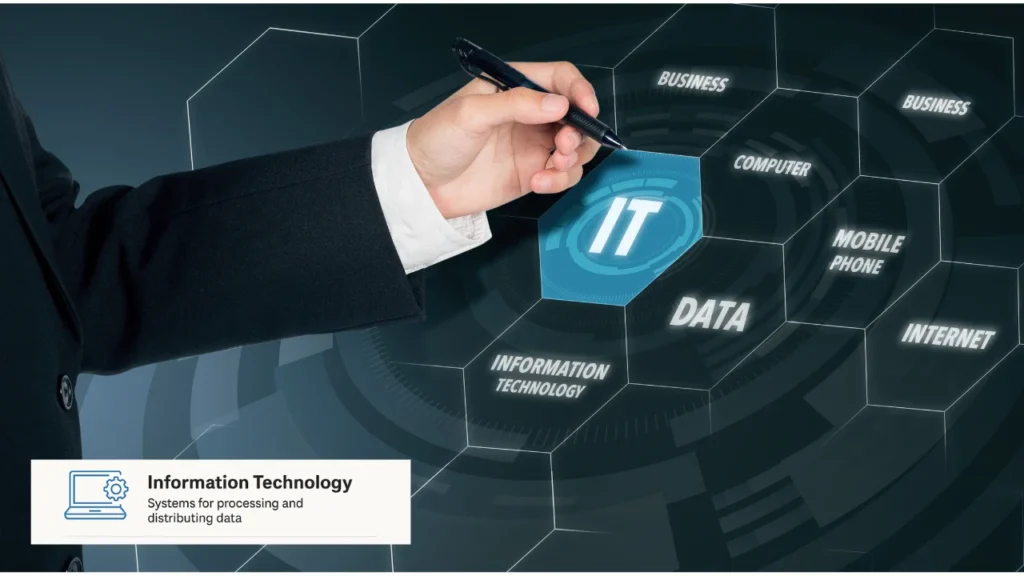
Definition and core purpose of IT
The very essence of the internet and all things digital lies in information technology (IT). Data storage, processing, transmission, and retrieval are all a part of it. Computers, software, networks, and other electronic systems are used. Whether in the healthcare, education, financial, or retail sectors, IT solutions aim to simplify, speed up, and improve the accuracy of complicated activities.
Everyday uses of information technology
Tech is always there, from cellphones to smart homes. With cloud storage, we may save files and view them from any device, anywhere. We use apps to keep track of our money, our appointments, and even our health. Modern information technology has allowed for the rise of many useful tools, such as search engines, online marketplaces, and video conferencing.
Impact of IT on global industries
Business operations have been radically altered by IT. It is now crucial to have automation, data analytics, and cybersecurity in place. Networked IT infrastructures have enabled the rise of intelligent decision-making, real-time communication, and remote work, allowing companies to manage their global operations from a single dashboard.
Future trends in information technology
Trends in the next iteration of information technology include blockchain, edge computing, quantum computing, and artificial intelligence (AI). Automation, decentralization, and the precision of decision-making will all be accelerated even further by these innovations.
Benefits of mastering information technology
Everyone, not only techies, needs to know how IT works. Anyone hoping to maintain a competitive edge in today’s digitally driven job environment should read it. Knowing how to code and being aware of cybersecurity are two examples of why IT literacy is so important in today’s environment.
Exploring Communication Technology Advancements

What makes communication technology essential
Transmission of information across long distances is the primary function of communication technology. It started with telegraphs and has since progressed to 5G networks, which link people more quickly and reliably than previously. Modern means of instantaneous worldwide communication allow for global teams to work together in real-time, whether via email or social media.
Role in modern businesses and education
Efficiency in business is driven by communication technology. Teams remain connected through the use of email, video conferencing, customer relationship management software, and online collaboration forums. Virtual classrooms, e-learning platforms, and interactive whiteboards have entirely changed the way information is shared in schools.
Examples of communication technology in use
Satellites, smartphones, messaging apps, fiber-optic internet, and even virtual meetings enabled by augmented reality are all examples. The increasing integration and immersion of communication is illustrated by social platforms like Microsoft Teams, Zoom, Slack, and WhatsApp.
How communication technology shapes societies
Both information and activism have been democratized by the ability to exchange ideas globally within seconds. Whether it’s real-time news or viral campaigns, communication tools enable people to have a say and make institutions answer for their actions. International cooperation and digital diplomacy are among the areas they stand behind.
Emerging innovations in communication tools
Immersive experiences are taking center stage in conversation thanks to developments like brain interfaces, mixed reality, and the metaverse. Sending complete sensory experiences, rather than merely words or images, would soon be possible, closing the gap between the digital and physical worlds.
Biomedical Technology Enhancing Human Health
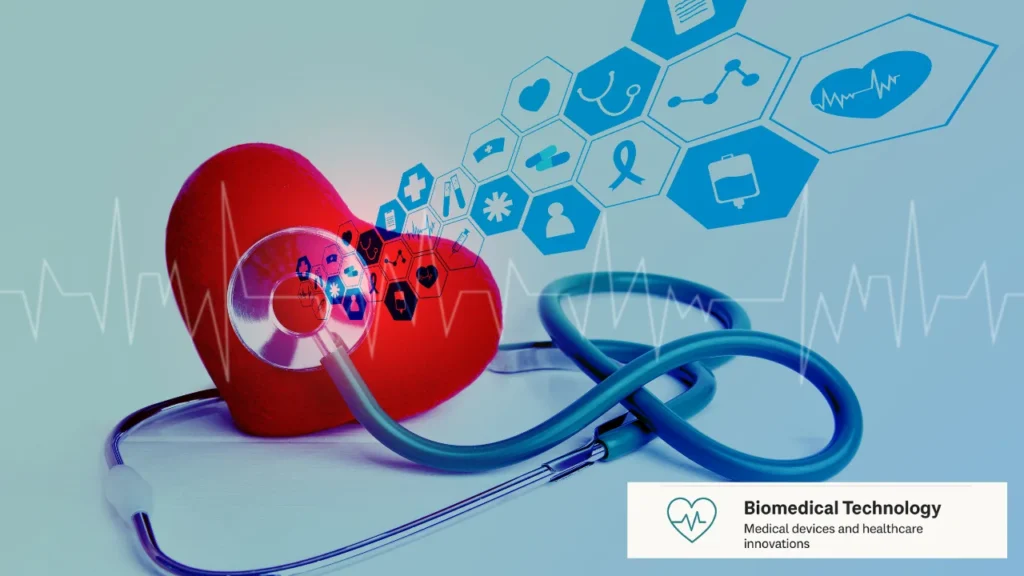
Purpose and scope of biomedical tech
Devices and instruments used in the fields of medicine and healthcare are collectively known as biomedical technology. Healthcare treatments are made more precise, safer, and more effective by this sector, which includes technologies like robotic operations and magnetic resonance imaging scanners.
Examples of biomedical technology in real life
Some examples of real-world applications of AI include digital stethoscopes, insulin pumps, wearable fitness trackers, telemedicine systems, and prostheses. People all throughout the globe benefit from these advancements in terms of accessibility and health outcomes.
Impact on medical research and diagnostics
Biomedical technology enables personalized treatment regimens, faster clinical trials, and early disease detection. Genomic research and individualized healthcare are experiencing a technological revolution because of innovations such as next-gen sequencing and CRISPR gene editing.
Revolutionizing healthcare delivery systems
The advent of robotic surgery, AI-assisted diagnostics, and remote patient monitoring has revolutionized healthcare by making it more preventative and less intrusive. With the integration of smart health ecosystems, hospitals are able to decrease patient wait times and increase the success rate of treatments.
Ethical and regulatory aspects of biomedical tech
Issues of genetic alteration, access disparity, and data privacy are rising in tandem with the rate of innovation. Regulatory organizations have a crucial role in ensuring that these technologies are used in a responsible and ethical manner while also promoting safety.
Agricultural Technology for Food Sustainability

Definition and importance of agri-tech
Efficiency, sustainability, and crop output are three areas that agricultural technology seeks to enhance. It guarantees food security in a warming and expanding world by combining scientific knowledge with engineering principles in agricultural methods.
Examples of agricultural technology in action
Crop health is monitored by drones. Tractors directed by GPS maximize farmland utilization. Water is conserved using automated watering systems. Genetically engineered crops are resistant to drought and pests. These instruments boost efficiency and cut down on wastage.
Boosting food production with smart farming
Agronomists can now monitor soil, weather, and crop health in real-time with the use of data analytics, artificial intelligence, and the Internet of Things (IoT). Such monitoring allows for more precise farming, which in turn reduces resource consumption while increasing yields.
Sustainability through agricultural innovation
Minimizing environmental damage is made possible with agri-tech solutions such as hydroponics, vertical farming, and biopesticides. They make it possible to produce food in cities all year round while also lowering the agricultural sector’s carbon footprint.
Challenges and future of agri-tech
High prices, a dearth of farmer training, and gaps in rural areas’ internet infrastructure are some of the obstacles that agri-tech faces, despite its enormous potential. But new developments keep closing the gaps and furthering the cause of world food security.
Construction Technology in Infrastructure Development
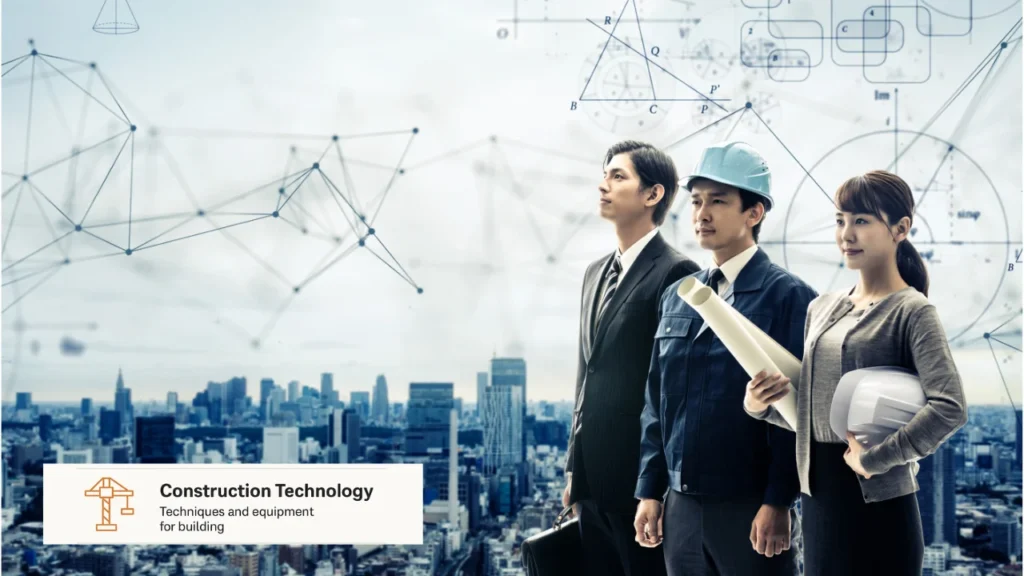
Purpose and impact of construction tech
To construct buildings in a more efficient, safe, and environmentally friendly manner, construction technology encompasses a wide range of hardware, software, and systems. The use of construction technology is revolutionizing the building of modern structures, such as skyscrapers and bridges.
Innovations like 3D printing and robotics
Fast, cheap, and waste-free building is possible with 3D printing, making it a fantastic choice for commercial and inexpensive housing. Robots automate welding and bricklaying, two repetitive jobs that are both safer and more accurate than humans.
Smart materials and sustainable designs
Adaptable smart materials like self-healing concrete and energy-efficient glass are used in modern buildings. Minimizing energy use, making the most of natural light, and utilizing eco-friendly materials are the main goals of green building designs.
Project management through construction software
Digital twins, drone mapping, and Building Information Modeling (BIM) are just a few examples of the cutting-edge software technologies that are transforming the way projects are planned. The whole construction project lifecycle may be better understood, simulated, and managed with the help of these technologies.
Improving safety and compliance
Improved worker safety is another benefit of construction technology. Fatigue or exposure to dangerous environments can be detected by wearable sensors. Workers can benefit from augmented reality (AR) training because it allows them to practice potentially harmful situations in a safe setting. Data tracking and reporting in real-time makes compliance with rules easier.
Manufacturing Technology in Industry
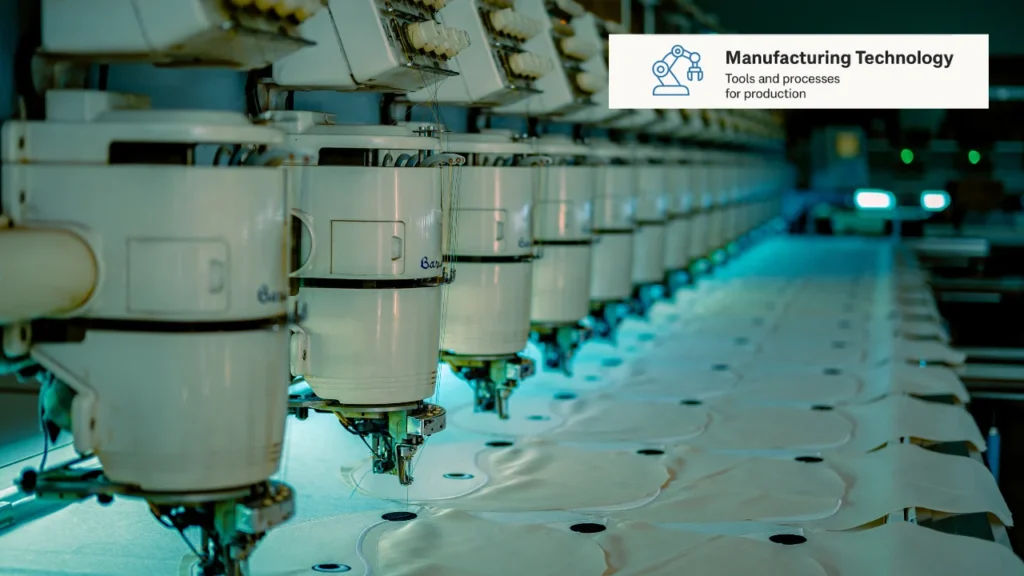
What defines manufacturing technology
All the gear, implements, and protocols that go into making a product from its components are part of manufacturing technology. It has an essential role in boosting industrial output, GDP growth, and international trade.
Smart factories and automation systems
Modern manufacturing facilities are “smart factories” that rely on the Internet of Things (IoT), robotics, and artificial intelligence (AI) to run with little to no human oversight. These technologies are able to respond to demand in real-time, speed up production, and decrease errors.
Role of robotics in modern manufacturing
From assembly to packaging, robotic arms, cobots (collaborative robots), and autonomous vehicles take care of it all. They are able to do dangerous or repetitive tasks more safely and effectively.
Use of additive manufacturing or 3D printing
By building complex components layer by layer, additive manufacturing helps businesses drastically cut down on material waste. Innovation and product development are accelerated through the use of rapid prototyping.
Data analytics and predictive maintenance
To keep track of machinery and anticipate when it will break down, modern manufacturing technology makes use of sophisticated analytics tools. By doing so, we can keep costs down, limit downtime, and guarantee consistent product quality.
Transportation Technology Transforming Mobility
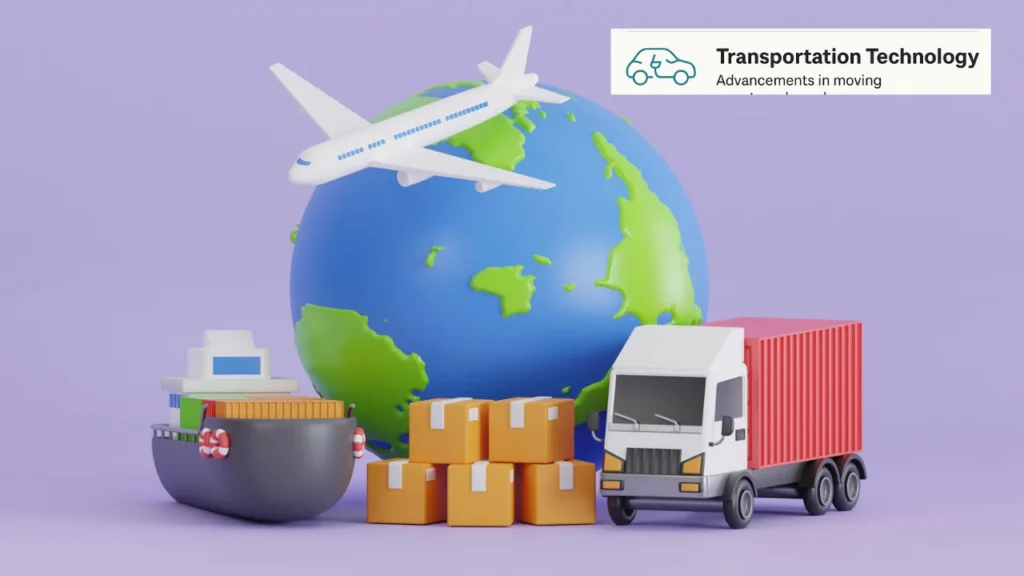
Importance of transportation technology today
Improving the speed, safety, cleanliness, and efficiency of transportation is just one of the many goals of transportation technology. Another is the efficient movement of people and products. New forms of transportation are becoming more important as the world’s cities and trade become more interconnected.
Electric vehicles and green mobility
Symbols of environmentally friendly transportation, electric cars (EVs) have emerged. Pollution and reliance on fossil fuels are both mitigated by EVs, thanks to their zero-emission tailpipes. New developments in battery technology are lowering the price of EVs and increasing their practicality.
Autonomous driving systems and safety
Self-driving vehicles, including cars, trucks, and drones, are transforming the transportation of products and people. These cars can avoid accidents caused by human mistakes by navigating with the help of sensors, artificial intelligence, and GPS.
Public transportation innovation
Automated buses, high-speed trains, and smart ticketing systems are all part of today’s public transportation networks. Better urban mobility, less traffic congestion, and less carbon footprints are all results of these technologies.
The rise of air and space mobility
New developments in transportation technology, such as commercial space flight and drone delivery networks, demonstrate that this industry is thinking beyond the road. Concepts for urban air mobility (UAM), such as flying taxis, are now in the works to address the issues posed by megacities.
How the 7 Types of Technology Shape Society
Interconnectivity of technological categories
All seven forms of technology rely on and benefit from one another. Biomedical equipment is made possible, for example, by manufacturing tech and communication tools by information technology. When these two factors work together, they speed up innovation in all kinds of sectors.
Role in global economic development
Productivity rises and new markets are born as a result of technological progress. The industrialized world uses technology to maximize efficiency and cut costs, while the developing world gains an advantage by advancing past older methods. This interdependent expansion is the lifeblood of the global digital economy.
Shaping the future of work and education
Smart technology and automation are changing the way people work and the skill sets they need to succeed in the workplace. Education is becoming more accessible and tailored thanks to technology, which is preparing people better for their future employment.
Improving quality of life
Tech helps with practical issues like renewable energy and healthcare accessibility. Technology paves the way for more secure transportation, improved communities, and increased access to food, thereby elevating living standards globally.
Fostering innovation and creativity
Entrepreneurs, innovators, and inventors now have the means to test new frontiers thanks to technological advancements. It encourages taking risks, which can lead to revolutionary solutions, and it promotes a culture of experimentation.
What Are Real-World Examples of the 7 Types of Technology?
To better understand how pervasive and influential these technologies are, consider the following real-world examples:
- Digital infrastructure: iOS, Google Cloud, and Azure from Microsoft.
- Communication technology: Zoom for video conferencing, WhatsApp for messaging, and Starlink for satellite internet.
- Biomedical technology: Fitbit health trackers, CRISPR gene editing, and da Vinci surgical robots.
- Agricultural technology: John Deere’s smart tractors, drone crop monitoring, and vertical farms like AeroFarms.
- Construction technology: Icon’s 3D-printed homes, BIM 360 project management software, and AR-based training modules.
- Manufacturing technology: Tesla’s automated factories, Siemens’ digital twins, and GE’s predictive maintenance systems.
- Transportation technology: Tesla electric cars, Hyperloop prototypes, and Amazon’s delivery drones.
Applications of the 7 Types of Technology in Education
Enhancing learning through smart tools
Modern technology has greatly benefited education. Technology such as virtual classrooms, iPads, and smart boards is changing the way students engage with course materials. Management of assignments, tracking of progress, and encouragement of cooperation are all made easier using tools such as Google Classroom and Microsoft Teams.
Role of communication and information technologies
Modern classrooms revolve around various forms of electronic communication and information sharing. These days, students can take advantage of AI-powered tutoring services, online video lectures, and online classes from any location. Regardless of their location, millions of people now have access to high-quality education because of this, which has democratized learning.
Supporting STEM and technical education
Students can gain practical experience using technology, including lab simulations, 3D printers, and coding kits. By combining theory with practice, robotics, the Internet of Things (IoT), and augmented reality/virtual reality (AR/VR) tools equip students for tech-driven occupations.
Improving administrative efficiency in schools
Digital attendance systems, analytics for performance, and tools for managing school funds are all useful for educational institutions. These innovations simplify processes, cut down on wasted time, and improve cross-departmental decision-making.
Creating inclusive learning environments
Every student can succeed in today’s inclusive classrooms thanks to technological advancements like screen readers for the visually impaired and speech-to-text aids for individuals with learning challenges.
How Do the 7 Types of Technology Relate to STEM Education
Building tech literacy from an early age
Students who take the time to master these seven areas will be well-prepared for careers in the STEM fields. The importance of innovation and the interplay between various technologies is emphasized to students.
Encouraging interdisciplinary problem-solving
The focus of STEM curricula is on solving complex, multi-technology problems in the real world, such as climate change or the development of smart cities. Students hone their adaptable thinking abilities by studying the inner workings of each technology type.
Empowering future innovators and leaders
Students exposed to various technologies are more likely to become engineers, entrepreneurs, and inventors. They can make game-changing innovations in manufacturing, healthcare, and agricultural tech by studying these fields’ inner workings.
Driving gender and diversity inclusion in tech
By showcasing the many forms of technology, we can help more students—particularly those from marginalized groups and girls—to imagine themselves working in this field. More people will be interested in and able to pursue STEM jobs when schools highlight their many potential uses.
Connecting curriculum to global trends
Green building and smart farming are two examples of real-world applications that can be incorporated into the curriculum to enhance its relevance and excitement. The relevance of what they study to their everyday lives is made clear to them.
What Careers Are Associated with Each of the 7 Types of Technology
Information technology careers
Positions such as systems architect, cybersecurity specialist, data analyst, and software developer are available in the IT industry. From healthcare to banking, these occupations are essential.
Communication technology careers
Network engineers, telvarious, and user experience designers are all part of this industry. They come up with and oversee networks that link the entire planet.
Biomedical technology careers
Experts in health informatics, clinical technologists, and biomedical engineering all fall within this category. Improving healthcare and scientific inquiry depends on these responsibilities.
Agricultural technology careers
Precision agriculture analysts, drone pilots, agri-software programmers, and sustainability consultants are all part of the agri-tech industry. To feed an expanding human population, they are indispensable.
Construction technology careers
Jobs in this sector range from computer-aided design (CAD) designers and site engineers to augmented reality (AR) simulation experts, all with a focus on creating buildings that are safer, smarter, and more environmentally friendly.
Manufacturing technology careers
Professionals in the fields of industrial engineering, robotics, and lean manufacturing are all part of this workforce. Factory operations are kept inventive and efficient by these specialists.
Transportation technology careers
Jobs in transportation technology, such as electric vehicle (EV) engineering, logistics software development, and autonomous vehicle (AV) programming, are defining the future of transportation around the world.
How Are the 7 Types of Technology Shaping the Future
Driving smart city innovation
The Internet of Things (IoT) and autonomous buses are two of the many technologies that smart cities depend on. The energy efficiency, transportation safety, and responsiveness of these cities’ public services are all top priorities.
Creating personalized digital experiences
Customization of technologies to meet specific demands is on the rise. There has been a dramatic increase in the personalization of the user experience across a wide range of industries, including biomedical tech (powered by AI) and communication and IT (adaptive learning platforms).
Fostering resilience against global challenges
These technologies provide strong resources for resilience, whether we’re battling pandemics, reducing the effects of climate change, or guaranteeing food security. Contributing factors include agri-tech, biomedical innovations, and sustainable building practices.
Enabling space exploration and beyond
Intelligent machines, sophisticated materials, and artificial intelligence are paving the way for human settlements in space. These technologies are constantly evolving and overlapping, as seen in their future applications.
Redefining the human experience
In the end, technology is changing the way we live, work, study, and connect. We are getting closer to a healthier, more inclusive, more intelligent world as each type keeps evolving.
Must Visit: SFM Compile: A comprehensive Guide For 3D Animation
Conclusion
Technology is an expansive web of inventions that impact our lives and advancements; it is not a singular tool or product. Information, communication, biomedical, agricultural, construction, manufacturing, and transportation technologies are the bedrock of contemporary society. They build tomorrow’s infrastructure, revolutionize education, and boost health care all at once.
In today’s rapidly evolving digital landscape, the ability to adapt, develop, and take the lead depends on a firm grasp of these categories. The future belongs to those who use this information to improve the world, not those who use it for personal gain.
Frequently Asked Questions
What are the 7 types of technology and their examples?
The seven types include information, communication, biomedical, agricultural, construction, manufacturing, and transportation technologies. Each has distinct uses—like electric vehicles in transportation and 3D printing in manufacturing.
How do the 7 types of technology impact our daily lives?
They affect everything from how we talk and travel to how we stay healthy and build cities. Every sector of modern life is shaped by one or more of these technological categories.
Why are there 7 types of technology?
These seven categories help classify the broad scope of innovation and allow better understanding, research, and application across industries.
Which of the 7 types of technology is growing the fastest?
Information technology, particularly AI and cloud computing, is currently leading in growth due to its versatility and applications in almost every sector.
What are the applications of the 7 types of technology in education?
From e-learning platforms and virtual classrooms (communication tech) to smart labs and STEM kits (information and manufacturing tech), these innovations are making education more accessible and engaging.

My name is Nancy Rose, and I’m a passionate blogger at Techiwell.com, a platform dedicated to exploring technology, business, entertainment, and general topics. I strive to create engaging, insightful, and informative content to keep readers updated and inspired in our fast-changing world.
